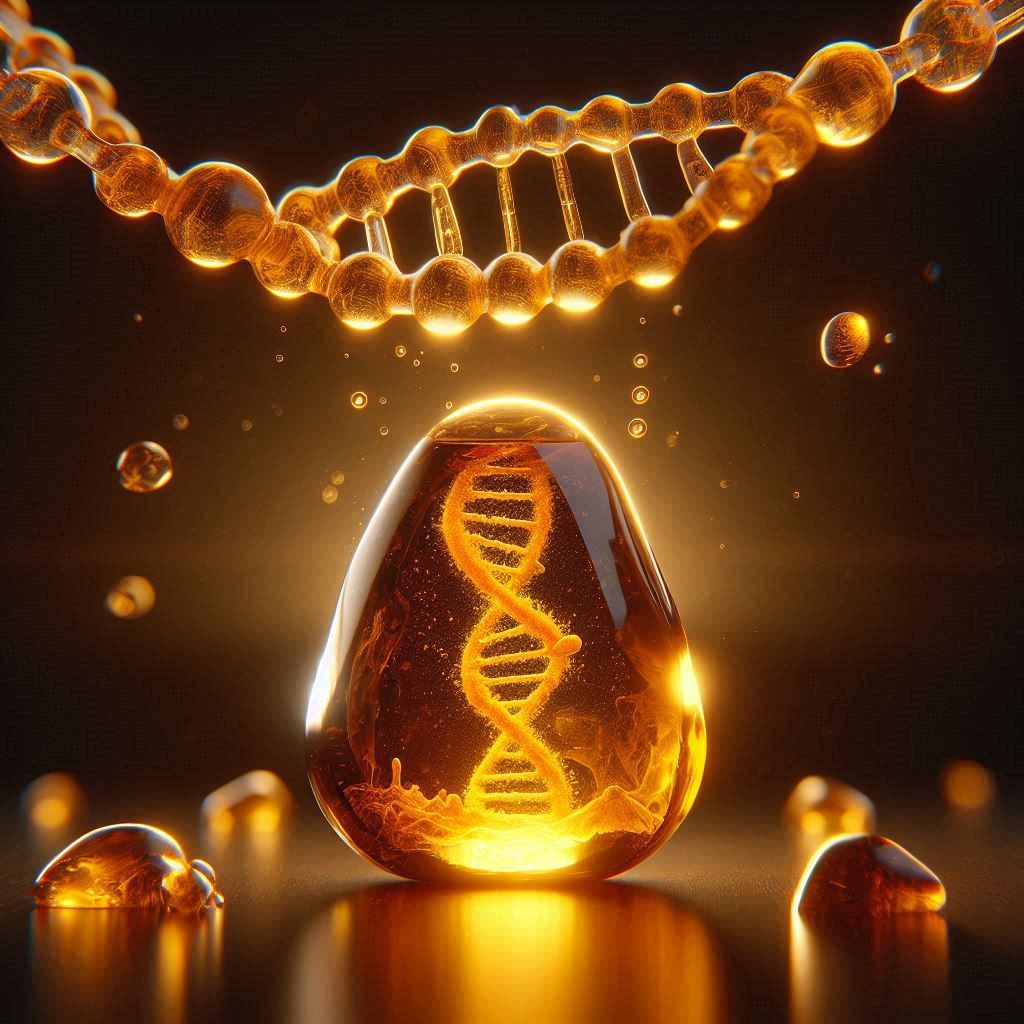In the film “Jurassic Park,” scientists recreated a colony of long-extinct dinosaurs using DNA that had been stored in amber for millions of years.
MIT scientists have created a glassy, amber-like polymer that can be utilized for the long-term preservation of DNA, including whole human genomes and digital information like images, in part because of that movie.
Since the majority of existing techniques for preserving DNA call for freezing temperatures, they are impractical in many regions of the world and cost a lot of energy. On the other hand, DNA may be stored at room temperature in the new amber-like polymer while being shielded from heat and moisture degradation.
The scientists demonstrated that they could store a whole human genome and DNA sequences encoding the Jurassic Park theme song using this polymer. Additionally, they showed how simple it is to extract DNA from a polymer without causing any harm to it.
Freezing DNA is the number one way to preserve it, but it’s very expensive, and it’s not scalable,
I think our new preservation method is going to be a technology that may drive the future of storing digital information on DNA.
James Banal
Their findings were published in the journal Journal of the American Chemical Society.
Since DNA is an extremely stable molecule, it works well for storing large volumes of data, including digital data. Text, images, and other types of data are encoded by digital storage devices as a string of 0s and 1s. The four nucleotides A, T, G, and C that make up the genetic code may be used to encode the same information in DNA. For instance, 0 may be represented by G and C, and 1 by A and T.
DNA provides a very high-density method of storing this digital data: The world’s data might theoretically be stored in a coffee cup filled with DNA. Furthermore, DNA is exceedingly stable and rather simple to synthesise and sequence.
Banal and his postdoctoral adviser, Mark Bathe, a biological engineering professor at MIT, created a method in 2021 for storing DNA in silica particles that could be marked with tags that disclosed the contents of the particles. Cache DNA is a spinout that resulted from such a study.
The fact that it takes several days for DNA to become embedded in the silica particles is one drawback of that storage method. Hydrofluoric acid is also needed to extract the DNA from the particles, which might be dangerous for the personnel handling the DNA.
Banal started collaborating with Johnson and his lab mates to develop substitute materials for storage. They planned to employ a class of polymer called a degradable thermoset, which is composed of polymers that, when heated, solidify. Additionally, the material has readily breakable cleavable linkages, which enable controlled degradation of the polymer.
With these deconstructable thermosets, depending on what cleavable bonds we put into them, we can choose how we want to degrade them.
Jeremiah Johnson
In order to create cross-linked polystyrene, a thermoset that resembles amber, the researchers’ thermoset polymer for this experiment was created by combining styrene with a cross-linker. Because of its high hydrophobicity, this thermoset can stop moisture from penetrating and harming DNA. The thionolactone monomers are copolymerized with the styrene monomers and cross-linkers to render the thermoset degradable. Applying a chemical known as cysteamine to these connections can break them.
The scientists had to devise a method to attract DNA, a hydrophilic molecule with a negative charge, into the styrene due to its extreme hydrophobicity.
To do so, scientists discovered a blend of three monomers that they could utilise to create polymers that interact with styrene to disintegrate DNA. The unique properties of each monomer work together to pull the DNA from the water and into the styrene. The DNA there combines to create spherical complexes, with hydrophobic groups creating an outer layer that interacts with styrene and charged DNA in the centre. This solution contains embedded DNA complexes and solidifies into a block resembling glass when heated.
T-REX (Thermoset-REinforced Xeropreservation) is the name given by the researchers to their technique. A few hours are needed to embed DNA into the polymer network, but the researchers believe that with more optimisation, this time might be reduced.
The polystyrene thermoset is broken into smaller pieces by the addition of cysteamine, which cleaves the bonds keeping it together and releases the DNA. The DNA may then be extracted from polystyrene without causing any damage by using a detergent known as SDS.
The researchers demonstrated that they could encapsulate DNA of different lengths, ranging from tens of nucleotides to the full human genome (more than 50,000 base pairs), using these polymers. They were also able to store DNA that encoded the MIT logo, the Emancipation Proclamation, and the Jurassic Park theme song.
A vital component of any digital data storage system is error-free sequencing, which the researchers discovered after storing and then deleting the DNA.
Additionally, the researchers demonstrated that DNA may be shielded from temperatures as high as 75 degrees Celsius (167 degrees Fahrenheit) by the thermoset polymer. The method of creating the polymers and shaping them into capsules for long-term preservation is now being streamlined.
Also Read| An improved prime editing system can do gene-sized edits in human cells at therapeutic levels
Now, Johnson is on the scientific advisory board of Cache DNA, a firm founded by Banal and Bathe that is focused on advancing DNA storage technology. The first use they can think of is genome storage for personalised therapy. As more advanced technology is created in the future, they also think that these stored genomes may be subjected to additional analysis.
The idea is, why don’t we preserve the master record of life forever?,
Ten years or 20 years from now, when technology has advanced way more than we could ever imagine today, we could learn more and more things. We’re still in the very infancy of understanding the genome and how it relates to disease.
James Banal
Source: Massachusetts Institute of Technology News
Journal Reference: Prince, Elisabeth, et al. “Reversible Nucleic Acid Storage in Deconstructable Glassy Polymer Networks.” Journal of the American Chemical Society (2024). DOI: 10.1021/jacs.4c01925.
Last Modified:






